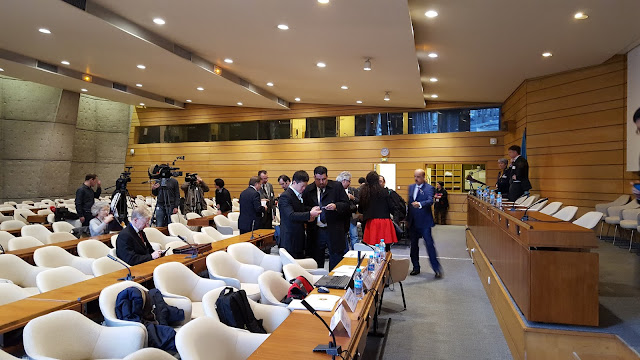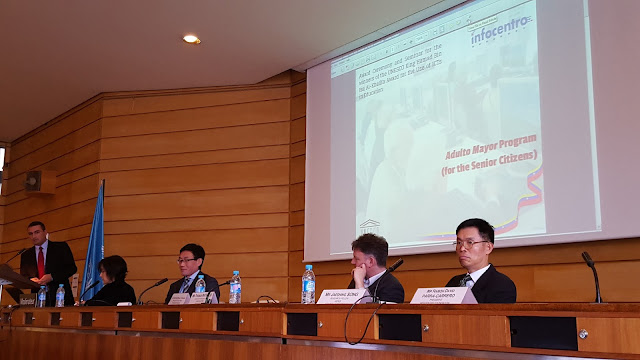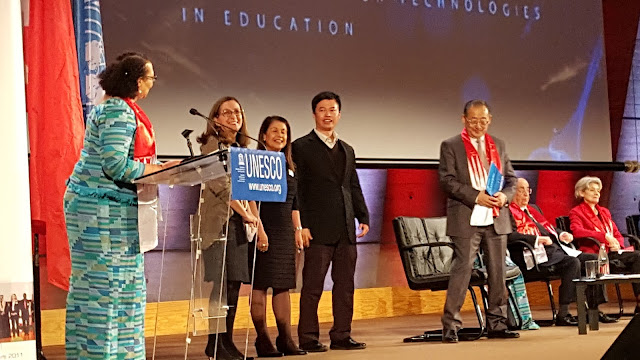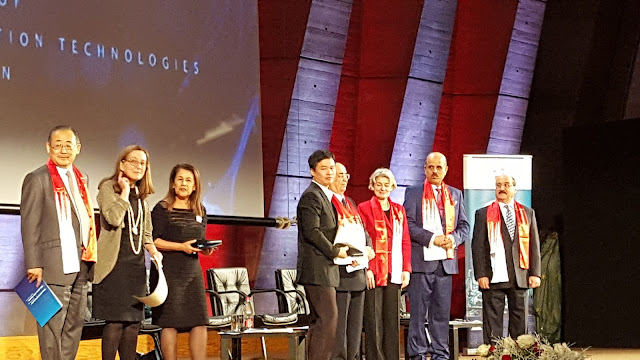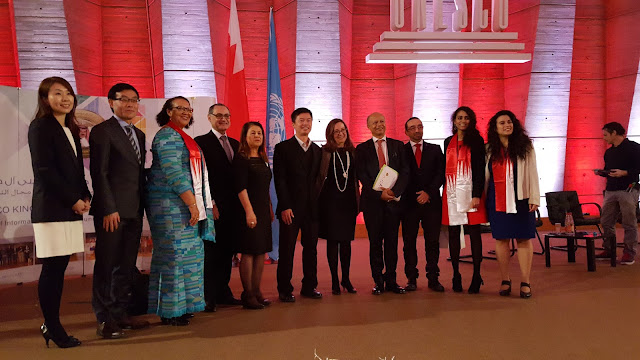Briefing Document: 🏆Open Source Physics @ Singapore (OSP@SG)
1. Overview:
- Project Name: Open Source Physics@Singapore (OSP@SG)
- Implementing Organization: Ministry of Education, Singapore (MOE)
- Main Partners: Open Source Physics (OSP) community
- Project Duration: Ongoing, started in January 2012
- UNESCO Prize: Winner of the 2015 UNESCO King Hamad Bin Isa Al-Khalifa Prize for the Use of ICTs in Education, themed "Pedagogical Innovation in the Use of ICT in Teaching and Learning."
2. Vision and Rationale:
- Vision: "To provide accessible, affordable and adaptable educational resources to teachers and students so that the teaching and learning of Physics can be enhanced."
- Rationale: To address the need for more engaging, interactive, and adaptable physics learning resources, moving beyond traditional methods.
- Problem Addressed:Students' difficulty in applying mathematical understanding to physics concepts.
- Lack of opportunities for students to engage in authentic scientific practices, particularly modeling and computational thinking.
3. Core Components and Pedagogical Innovations:
- Open Educational Resources (OER): OSP@SG is built upon a foundation of OER, making resources freely available globally under a Creative Commons Attribution license (CC-BY). This promotes accessibility, adaptability, and sharing.
- Easy Java/JavaScript Simulations (EJSS): This is a primary tool used by OSP@SG. It allows for the creation of interactive simulations that can be:
- Accessible: No login required, available for immediate download and use.
- Affordable: Free of charge, requiring only internet access and a computer with EJSS software.
- Adaptable: Source codes are modifiable, allowing for improvements and customization.
- Tracker Video Analysis and Modeling Tool: This tool enables students to analyze real-world physics phenomena captured on video, using "dynamics particle modeling" and computational thinking, bringing the experience closer to how scientists work. It enables students to build models based on Newton's laws with if/then nested logic in small time intervals.
- Progressive Mathematical Model Building: A key pedagogical approach where students propose initial models, compare them to simulated data, refine them, and iterate until they achieve a good fit. This approach:
- Encourages student ownership of learning.
- Helps students grasp mathematical concepts within physics.
- Provides students with evidence to modify their own initial scientific models.
- Computational Thinking Integration: The use of Tracker promotes computational thinking through modelling and coding with nested "if" statements to represent contact forces and inertia.
- 3A Framework: OSP@SG operates on a 3A framework, which stands for Accessible, Affordable, and Adaptable, guiding the design and development of their educational resources.
4. Programme Details:
- Specific Objectives:Provide free resources to teachers and students globally.
- Empower teachers and students to build, modify, and reshare resources.
- Target Audience:Primary and Secondary School Students (Grades 3-6 Science and Mathematics, Grades 9-12 Physics)
- TVET school students (Grades 9-12 Physics)
- Outreach: As of 2015 data, OSP@SG reaches around 3200 students and 100 teachers annually in Singapore.
- International Collaboration: OSP@SG engages with individuals and institutions internationally, demonstrating the global relevance of their work (mentions collaboration with people in Brazil, India, Indonesia, Philippines and USA).
- Teaching Methodologies:Direct instruction, demonstration, guided inquiry, and progressive mathematical modeling.
- E-Learning Environment: Uses free and open source platforms like Blogger, Edmodo, and Moodle.
- Digital Devices and Connectivity: Leverages school-provided devices and internet access; simulations also work on students' personal phones.
- Curriculum Integration: OSP@SG is integrated into existing curriculum topics such as Kinematics, Dynamics, Oscillations and Gravity.
- Learning Outcomes: OSP@SG promotes students to experience a process of obtaining real data from physical phenomena, making inferences and deducing how the physical world works. Students also learn to use mathematics to deepen physics concepts. It also provides network learning opportunities to teachers.
- Learning Spaces: Resources can be used in computer labs, lecture halls, tutorial rooms, and even on students’ own devices anytime and anywhere.
- Content and Materials: The resources include Java/JavaScript simulations, Tracker video analysis models, and interactive textbook chapters, which are downloaded and then used.
- Quality Control: Quality is ensured through feedback from global users, student interviews, and Google forms.
5. Programme Results & Achievements:
- Impact: Reaching an estimated 3200 students and 100 teachers in Singapore.
- Awards:Singapore Public Service PS21 Distinguished Star Service Award (2014)
- Singapore Public Service PS21 Best Ideator Award (2012)
- Ministry of Education (MOE) Best Innovator Award 2013
- Ministry of Education (MOE) Excellent Service Award 2011
- Publications: 10 peer-reviewed articles, 16 other papers, shared on various platforms.
- Open Libraries: Easy Java/JavaScript Simulations and Tracker libraries are open access, affordable, and adaptable.
- Recognition: The award by UNESCO is a testament to the programme's significant impact and innovative approach.
6. Sustainability:
- 3P Framework: The project uses a 3P framework (Product, Process, People) for sustainability:
- Product: Free, open-source tools (EJSS and Tracker) that produce high-quality content.
- Process: Funding from eduLab, support from MOE, and international collaboration.
- People: A network of global experts and teachers who contribute to and sustain the OSP@SG community.
- Replication and Scaling: The programme has not been replicated or scaled up yet, as of this document.
7. Challenges and Constraints:
- Teacher Buy-in: Some teachers are hesitant to adopt the modelling approach due to a focus on exam preparation, which does not typically emphasize these methods.
- National Examination Alignment: The current national examinations do not strongly emphasize the modeling practices of OSP@SG.
8. Key Quotes:
- "This award is a signal of our commitment in Singapore, in service of UNESCO, for the world, to contribute to the global missions for equitable access to open educational resources. OSP@SG is here to benefit the world." - WEE Loo Kang Lawrence
- "UNESCO has awarded Singapore in their attempt to bring countries together to license and contribute to the global movement towards open educational resources, empowering anyone to be educate and level up everyone regardless of race, language, gender or religion in the world." - WEE Loo Kang Lawrence
9. Summary:
OSP@SG is an innovative and impactful program that exemplifies how technology can be used to transform physics education. It provides free and accessible resources that encourage student-driven learning, modeling and computational thinking. It leverages open educational practices to create a community of learning both in Singapore and around the world. The program is also a testament to the power of collaboration between educators, technology developers and the open source community. The project's strengths include its commitment to OER, its focus on practical application of physics concepts, and its progressive and adaptive pedagogical approaches.
10. Additional Notes:
- The resources are constantly being updated with new applets and tracker video models.
- The project has collaborated with and hosted workshops by key individuals such as Fu-Kwun Hwang, Francisco Esquembre, Wolfgang Christian, and Douglas Brown.
- The success of the project is not only in the technical development but in the strong support and ecosystem it has built, which involves teachers, students, and educational technology experts.
This briefing provides a comprehensive overview of the OSP@SG project and its key components. It highlights the program’s innovative use of technology to enhance physics learning and its contributions to the wider open educational resources movement.
Glossary of Key Terms
Open Educational Resources (OER): Freely accessible and openly licensed teaching, learning, and research materials that can be used, reused, adapted, and shared.
Open Source: A model where the source code of software is available for modification and distribution. The open-source model enables community-driven improvement and sharing.
ICT (Information and Communication Technologies): Technologies, such as computers and the internet, used for information processing, communication, and education.
Pedagogical Innovation: New approaches and methods in teaching that aim to improve learning outcomes. The source text refers to the innovative use of ICT in teaching and learning.
Easy JavaScript Simulations (EJSS): A software tool that allows users to create interactive physics simulations by building mathematical models. It is an open-source program used to support OSP@SG activities.
Tracker: A video analysis and modeling tool used for analyzing real-world video footage of physics phenomena and creating models.
3A Framework: A guiding principle of OSP@SG that stands for Accessible, Affordable, and Adaptable, ensuring resources are easy to use, free of charge, and customizable.
Creative Commons Attribution (CC-BY): An open license that allows sharing and adaptation of work, provided that the original author is credited. It's used to distribute OSP@SG materials.
Progressive Mathematical Model Building: A pedagogical approach where students iteratively refine their mathematical models to align with experimental or simulated data. Students propose their own models to compare with the evidence.
Dynamics Particle Modeling: Using the Tracker tool to model the motion of particles and objects, with focus on Newton's Laws, using computational thinking.
EduLab: An initiative by the Ministry of Education (MOE) and National Institute of Education (NIE) in Singapore that supports ICT innovations in education. OSP@SG is an eduLab project.
update
UNESCO ICT Prize laureate from Singapore leading the way in bringing virtual learning in the classroom 08/08/2019 (my blog link)
About
UNESCO King Hamad Bin Isa Al-Khalifa Prize for the Use of ICTs in Education
The theme for the 2015 Prize is Pedagogical Innovation in the Use of ICT in Teaching and Learning.
Submission
https://weelookang.blogspot.com/2016/04/singapore-unesco-ict-prize-write-up.html
|
|
UNESCO King Hamad Bin Isa Al-Khalifa Prize for the Use of Information and Communication Technologies (ICTs) in Education 2015 Pedagogical Innovation in Using ICT in Teaching and Learning Submission Form (to be returned no later than 10 November 2015) |
||||||||||||||||||||||||||||||||||||||||||
|
1. Background Information |
|||||||||||||||||||||||||||||||||||||||||||
|
Title of programme/project: edulab Project on Open Source Physics@Singapore (OSP@SG) |
|||||||||||||||||||||||||||||||||||||||||||
|
Name of implementing organization or individual: Ministry of Education, Singapore |
|||||||||||||||||||||||||||||||||||||||||||
|
Country: Singapore |
|||||||||||||||||||||||||||||||||||||||||||
|
Programme duration Started at (month/year): January 2012 Ended at (month/year): Or ongoing: ☒ |
|||||||||||||||||||||||||||||||||||||||||||
|
Type of organization: National Government ☒ National NGO ☐ International NGO ☐ Other National Institution ☐ Other (Local branch of National NGO, Private body, Trade Union, Religious mission, etc.). ☐ Please specify |
|||||||||||||||||||||||||||||||||||||||||||
|
Operating in: Region ☒ Country ☐ District ☐ Province ☐ School ☐ Community ☐ Other ☐ Please specify |
|||||||||||||||||||||||||||||||||||||||||||
|
Main partner(s): Open Source Physics (OSP) |
|||||||||||||||||||||||||||||||||||||||||||
|
2. Contact Details |
|||||||||||||||||||||||||||||||||||||||||||
|
Name of contact person: Loo Kang Lawrence WEE |
|||||||||||||||||||||||||||||||||||||||||||
|
Job title (or position): Senior Specialist Level 2 |
|||||||||||||||||||||||||||||||||||||||||||
|
Full address: Ministry of Education • 1 North Buona Vista Drive, Singapore 138675 |
Country: Singapore |
||||||||||||||||||||||||||||||||||||||||||
|
Telephone (with country code): |
Website, if any: http://www.moe.gov.sg/about/org-structure/etd/ |
||||||||||||||||||||||||||||||||||||||||||
|
E-Mail: This email address is being protected from spambots. You need JavaScript enabled to view it. |
|||||||||||||||||||||||||||||||||||||||||||
|
3. Implementing Organization/Individual (maximum 300 words) |
|||||||||||||||||||||||||||||||||||||||||||
|
Please provide basic information about the implementing organization or individual: The eduLab programme is an initiative from the Ministry of Education (MOE) and National Institute of Education (NIE) that is supported by the National Research Foundation (NRF) in Singapore. It is a key programme under the ICT in Education Masterplan. Its objective is to identify and spread ground-up ICT innovations for learning. Partnering teachers, researchers and learning designers, eduLab programme strive to develop ICT innovations for learning that can be adopted by different schools across the system. The “Open Source Physics@Singapore (OSP@SG)” consists of 3 eduLab Projects.
OSP was recently selected by UNESCO Bangkok, Asia and Pacific Regional Bureau for Education, to be part of a free educational compilation entitled “UNESCO Directory of Free Educational Resources for Teachers. Vol. 1: Science” for distribution worldwide. To date, OSP@SG has contributed or adapted more than 150 Easy Java Simulations, 80 newer Easy JavaScript simulations, and 100 Tracker video analysis-models for use in our local curriculum. The simulations help to make Physics lessons to come "alive" through the visualisations. They also serve to pique curiosity and imagination amongst the students. Through OSP@SG’s use of creative commons attribution, the resources are available both in Singapore and around the world. |
|||||||||||||||||||||||||||||||||||||||||||
|
4. Programme Summary (maximum 300 words) |
|||||||||||||||||||||||||||||||||||||||||||
|
Describe the vision and rationale of the programme/project, the main goal on the quality of learning and/or the particular problem/s it seeks to address, and the pedagogical innovation of using ICT to achieve the goal or address the problem/s:
OSP@SG’s vision is to provide accessible, affordable and adaptable educational resources to teachers and students so that the teaching and learning of Physics can be enhanced. Its goal is to provide well designed simulation models and Tracker video models that can serve as powerful inquiry tools augmenting real-life experiments. Pedagogical approach 1: OSP@SG leverages progressive mathematical model building process using Easy JavaScript Simulations (EJSS) to allow students to propose their own initial ideas that can be modelled into a simulation. The closeness of the model versus the simulated data (based on their world view and scientific view such as displacement versus time) gives students the evidences to oppose their initial models. This iterative modeling building process is repeated until the students can achieve a mathematical equation that is close enough ‘fit’ to the simulated data. This approach address the problem of students not being able to bring their mathematical understanding to deepen physics learning as they can now build the tools that can render mathematical equations in simulations. Pedagogical approach 2: OSP@SG uses the dynamics particle modeling in Tracker tool to bring the Newton’s 2nd Law: F = ma with computational thinking of “nested if” statements to allow modeling of : 1) contact-reaction forces in very small time interval 2) simple Newton’s 1st Law of inertia. This approach addresses the problem of students not being able to experience next generation scientist Practice 2: Use Models and Practice 5: Computational and Mathematical Thinking, from the K-12 Science Education Framework. |
|||||||||||||||||||||||||||||||||||||||||||
|
5. Programme Details |
|||||||||||||||||||||||||||||||||||||||||||
|
a. Specific objectives (150-300 words) |
List and explain the specific objectives of the programme/project: To give students and teachers the freedom to learn from, code-build on and re-share well designed resources (Easy Java/JavaScript Simulations (EJSS) and Tracker video-models). Thus, OSP@SG’s 3A framework is used. It is :
(There is no password nor login required and people can download and use immediately. Hence, it heightens the chances of adoption of educational resources and practices).
(It is practically free of charge as you just need to pay for internet access and a computer with EJSS software to run with Java Runtime installed)
(All EJSS source are changeable and EJS & EJSS & Tracker models can be improved or added upon) |
||||||||||||||||||||||||||||||||||||||||||
|
b. Outreach |
Main target group(s): ☐ Pre-school children, please specify the grade level: ☒ Primary or secondary school students, please specify the grade level: 3 to 6 Science and Mathematics ☒ TVET school students, please specify the grade level and subject areas: 9 to 12 Physics ☐ Higher education students, please specify the grade level and subject areas: ☐Out-of-school youth and/or adults, please specify the age range and main background: ☐ Specific focus on women and girls? If yes, please specify: ☐ Specific focus on people with disabilities? If yes, please specify: ☐ Specific focus on indigenous peoples or minority groups? If yes, please specify: ☐ Other, please specify |
||||||||||||||||||||||||||||||||||||||||||
|
How are the learners’ needs determined? Please describe: The learners’ needs are determined through:
|
|||||||||||||||||||||||||||||||||||||||||||
|
Number of locations/class where the programme is running: 12 Singapore Schools as shown in table.
|
|||||||||||||||||||||||||||||||||||||||||||
|
Number of participants reached annually: 3200 Number of participants reached by the programme since its inception: 5600 Internationally, as an indication of the spread of OSP@SG, below are some people who contacted OSP@SG for assistance and collaboration.
|
|||||||||||||||||||||||||||||||||||||||||||
|
c. Programme Delivery |
Teaching-learning methodology |
||||||||||||||||||||||||||||||||||||||||||
|
How is teaching-learning methodology determined to achieve the goal or address the problem/s? Please describe: interviews with students and teachers |
|||||||||||||||||||||||||||||||||||||||||||
|
What kind of teaching methodology is applied? Please describe:
Teacher explains explicitly the meaning
Teacher shows the phenomena to excite the students.
Students direct the learning with the teacher as a guide by the side
Students propose their own initial mathematical models and with evidences presented come up with a closer model that matches the real world video or simulated data. |
|||||||||||||||||||||||||||||||||||||||||||
|
E-Learning environment Blogger, Edmodo and Moodle. |
|||||||||||||||||||||||||||||||||||||||||||
|
How is e-learning environment determined to respond to learners’ needs and to enable/innovate the teaching-learning methodology? Please describe: The learning platforms were chosen because of its very low financial cost or it is free. As they are open source, it provides teachers with the freedom to change the codes, edit the video models and redistribute licensed creative commons attribution. |
|||||||||||||||||||||||||||||||||||||||||||
|
What type of main digital devices and internet connectivity has the implementing organization/individual provided for teachers/facilitators? Please specify: Windows and MacOSX Computers, iPads, school protected WiFi networks or teacher/students internet data plan |
|||||||||||||||||||||||||||||||||||||||||||
|
What type of main digital devices and internet connectivity has the implementing organization/individual provided for learners? Please specify: Yes, provided by Ministry of Education, Singapore. Students used school-owned devices for the lessons and the Internet access was also school-provided. Students in Singapore have access to digital devices as all schools are given standard ICT provisions by the Ministry of Education. Households with school-going children who cannot afford the devices can tap on financial schemes where they can apply to buy the computing devices at affordable prices. |
|||||||||||||||||||||||||||||||||||||||||||
|
Does the implementing organization/individual developed strategies to make use of household or personal digital devices and internet connectivity? If yes, please specify: Yes, student's personal handphone can run in fullscreen mode the EJSS simulations. |
|||||||||||||||||||||||||||||||||||||||||||
|
Structure and organization of learning |
|||||||||||||||||||||||||||||||||||||||||||
|
If the pedagogical innovation of using ICT is integrated in the existing programmes of study, please respond to questions (1.1)-(1.8). |
|||||||||||||||||||||||||||||||||||||||||||
NRF2013-EDU001-EL017 Becoming Scientists through Video Analysis Topic: Grade 9 Physics, Kinematics and Dynamics Learning outcomes: To promote students to be like scientists (where they obtain real data from physical phenomena and make inference and deduce how the physical world work) through video analysis and model building. |
|||||||||||||||||||||||||||||||||||||||||||
|
1.2 What is the duration of the programme of study? 2 years |
|||||||||||||||||||||||||||||||||||||||||||
|
1.3 What is the division between teaching and learning hours of the programme of study? 50/50 |
|||||||||||||||||||||||||||||||||||||||||||
|
1.4 What is the average number of learners per class/group? 40 |
|||||||||||||||||||||||||||||||||||||||||||
|
1.5 What are the main pedagogical methodologies of using ICT in the programmes of study? Please describe: guided inquiry and model building Student-scientists make the effort with support by teachers to inquire on a question, record data sets, analyze information, interpret results, and communicate findings. |
|||||||||||||||||||||||||||||||||||||||||||
|
1.6 The frequency of teachers’ pedagogical use of ICT: ☐Almost every lesson/unit ☒Once a week ☐Once a month ☐No more than 3 times per semester ☐Others, please specify: |
|||||||||||||||||||||||||||||||||||||||||||
|
1.7 The frequency of learners’ use of ICT: ☐Almost every lesson/unit ☒Once a week ☐Once a month ☐No more than 3 times per semester ☐Others, please specify: |
|||||||||||||||||||||||||||||||||||||||||||
|
1.8 What are the main locations/spaces of learners’ pedagogical use of ICT? computer laboratory |
|||||||||||||||||||||||||||||||||||||||||||
|
If new e-learning activities are developed, please respond to questions (2.1)-(2.8) |
|||||||||||||||||||||||||||||||||||||||||||
|
2.1Please specify the main topics and main learning outcomes of the newly designed e-learning activities: NRF2015-EDU001-EL021 Modelling-Inquiry enabled Interactive Textbook Topic : Oscillators Textbook Oscillators and Gravity topics Students learning outcomes: Students are able to use mathematics to deepen physics concepts. Topic : Mechanics, Oscillators and Gravity topics Outcomes: To provide opportunities for network learning amongst the teachers so that they are able to create simple simulations and video analysis to enhance students’ learning of physics |
|||||||||||||||||||||||||||||||||||||||||||
|
2.2 What is the duration of the e-learning activities per semester? 6 weeks What is the duration of the learning activities in total? 6 weeks |
|||||||||||||||||||||||||||||||||||||||||||
|
2.3 What is the division between teachers’ lecture/facilitation and learners’ learning and other activities? 50/50 |
|||||||||||||||||||||||||||||||||||||||||||
|
2.4 How does the implementing organization/individual manage to make the needed teaching and learning hours available? The project is carried out during existing curriculum hours. |
|||||||||||||||||||||||||||||||||||||||||||
|
2.5 What are the main pedagogical methodologies used to organize the e-learning activities? Please describe: direct instruction, guided inquiry and model building
Teacher explains explicitly the meaning
Teacher shows the phenomena to excite the students.
Students direct the learning with the teacher as a guide by the side
Students propose their own initial mathematical models and with evidences presented come up with a closer model that matches the real world video or simulated data. |
|||||||||||||||||||||||||||||||||||||||||||
|
2.6 What is the average number of learners per class/group? 25 |
|||||||||||||||||||||||||||||||||||||||||||
|
2.7 Please specify the frequency and main purposes of learners’ use of ICT: twice a week, guided inquiry and model building |
|||||||||||||||||||||||||||||||||||||||||||
|
2.8 What are the main locations/spaces of learners’ pedagogical use of ICT? lecture halls, tutorial rooms, computer laboratory, students' devices learning anytime anywhere |
|||||||||||||||||||||||||||||||||||||||||||
|
Online content and digital materials 2 sample interactive textbook-chapters can be found on iBook Link1, Link2, PlayBook Link1, Link2 and Kindle Store |
|||||||||||||||||||||||||||||||||||||||||||
|
Is the online content used? If yes, please describe how the online content is selected: Download once and use |
|||||||||||||||||||||||||||||||||||||||||||
|
What kind of digital material is being re-used and from where? Please describe: The java simulations and video analysis models are shared on the internet. |
|||||||||||||||||||||||||||||||||||||||||||
|
Does the programme use newly developed digital materials? If yes, please describe how and by whom the digital materials are developed: Yes, through request by teachers in the OSP community, author: Loo Kang WEE OSP@SG> |
|||||||||||||||||||||||||||||||||||||||||||
|
How is the quality of the newly developed material ensured? Please describe: Feedback from anyone in the world, as well as students interviews after lessons Using Blogger and Google+ comments for feedback Using face to face interviews with students and Google forms |
|||||||||||||||||||||||||||||||||||||||||||
|
Does the programme/project adopt any kind of open license? If yes, please describe: creative commons attribution CC-BY |
|||||||||||||||||||||||||||||||||||||||||||
|
Language(s) of instruction |
|||||||||||||||||||||||||||||||||||||||||||
|
☐ Official language of the country, please specify: English ☐ Local language, please specify: English ☐Other, please specify: |
|||||||||||||||||||||||||||||||||||||||||||
|
Assessment, recognition, validation and accreditation of learning outcomes |
|||||||||||||||||||||||||||||||||||||||||||
|
How are the learning outcomes assessed? Please describe: Survey, Pre-Post Tests, Interviews
|
|||||||||||||||||||||||||||||||||||||||||||
|
Does the programme issue any certification? If yes, describe how: NIL |
|||||||||||||||||||||||||||||||||||||||||||
|
Does the programme/project use any ICT to facilitate the assessment of the learning outcomes? If yes, please describe: No |
|||||||||||||||||||||||||||||||||||||||||||
Teachers/facilitators |
|||||||||||||||||||||||||||||||||||||||||||
|
How many teachers are needed for the entire duration of the programme/project? 2 per class |
|||||||||||||||||||||||||||||||||||||||||||
|
What is the learner/teacher ratio? 25/1 to 40/1 |
|||||||||||||||||||||||||||||||||||||||||||
|
What kind of knowledge and skills does the teacher/facilitator need to master in order to deliver the programme/project? Physics knowledge with some coding skills for expert-customization-authoring use, Physics knowledge for EJSS simulations and tracker |
|||||||||||||||||||||||||||||||||||||||||||
|
Institutional programme support |
|||||||||||||||||||||||||||||||||||||||||||
|
What kind of support has the school/institutional leader provided to implement the programme/project? School leader support the programme by setting aside protected time, creating a common vision and providing strategic direction so as to build the capacity of teachers and key personnel. MOE provides consultancy to schools and conducts workshops at eduLab@AST, so as to deepen the pedagogical use of ICT to transform student learning. |
|||||||||||||||||||||||||||||||||||||||||||
|
Does the programme/project provide training/coaching for teachers/facilitators? If yes, describe how: edulab@AST workshops http://edulab.moe.edu.sg/edulab-ast/events-activities/sem-2-2015 MOE provides timely training/coaching through eduLab@AST workshops. There are also school visits and consultation conducted by MOEHQ officers for the teachers. MOE also organize workshops by experts such as Professor Francisco Esquembre, Fu-Kwun Hwang, Wolfgang Christian and Douglas Brown, to support teachers in bootstrapping modeling physical systems using Tracker video analysis and modeling tool and Easy Java/JavaScript Simulations authoring and modeling tool (EjsS). |
|||||||||||||||||||||||||||||||||||||||||||
|
Does the programme/project provide incentives for teachers/facilitators? If yes, describe how: Letters of appreciation |
|||||||||||||||||||||||||||||||||||||||||||
|
d. Innovative Features (Maximum 300 words) |
List and describe the innovative features of the programme/project: Access to learning with ICT for every child Beyond serving the Singapore students, OSP@SG also contributes to the wider international community. The resources created are available for teachers and students both locally and globally to access and use freely. Resources in the hands of every learner Many of the Easy JavaScript simulations not only can run on students’ personal small cell phone devices, they also have full screen capabilities. This allows for learning to be viable on small Android and iOS devices as well. Students will have access to the digital resources from their smart phones. Collaboration with Global experts Since 2012, the project has invited Fu-Kwun Hwang, creator of NTNU Java Virtual Labs, Francisco Esquembre, creator of EJSS authoring and modeling tool, Wolfgang Christian, creator of Open Source Physics, and Douglas Brown, creator of Tracker to Singapore. They conducted workshop for teachers on making simulations as well as on the pedagogical practices possible using our tools. Single development, ease code maintenance The same Easy JavaScript Simulations source codes can generate the same simulations that run on Android, iOS and mobile Windows through the modern browser. Any improvement/enhancement made can experience the same changes made available on all mobile platforms. This allows for ease of maintenance of a single source code instead of multiple development source codes for each mobile platform. |
||||||||||||||||||||||||||||||||||||||||||
|
6. Programme Results (300-500 words) |
|||||||||||||||||||||||||||||||||||||||||||
|
List and describe the achievements of the programme/project: An estimated (see table in 5b) of 3 200 students and 100 teachers in Singapore are using the resources in Open Source Physics@Singapore to support their teaching practices. This estimates are based on 2012 and 2014 data from 2 (5 junior colleges and 4 secondary schools) in the edulab projects combined. Beyond the schools, the resources are shared through blogs such as link1, link2 Selected OSP@SG Awards: The work of OSP@SG has been given the following awards at the Ministry and National levels.
Open Access Publications: OSP@SG research has generated 10 peer reviewed articles and another 16 papers that aims to enhance the creditability of using the work. In addition to journals websites, all 26 draft articles are also made available on http://arxiv.org/find/physics/1/au:+Wee_L/0/1/0/all/0/1 for the benefit of all. Open Shared Digital Easy Java/JavaScript Simulation and Tracker Library: All three OSP@SG libraries are open access, affordable (free) and adaptable (models can be added on). The setup on http://iwant2study.org/lookangejss/ connected directly via the respective authoring and modeling tools, make the resources easy to use, remix and redistribute. |
|||||||||||||||||||||||||||||||||||||||||||
|
7. Monitoring and Evaluation (200-400 words) |
|||||||||||||||||||||||||||||||||||||||||||
|
Do you, your organization, or a separate organization undertake monitoring and evaluation of the programme/project during its implementation? If yes, explain how: There is support from MOE to the schools in guiding and monitoring the development of the projects. OSP@SG also uses the Logic model to evaluate the inputs, activities, outputs and outcomes/impacts of the OSP@SG. Yearly reports are generated to inform eduLab programme office of the progress of OSP@SG. |
|||||||||||||||||||||||||||||||||||||||||||
|
8. Sustainability (200-400 words) |
|||||||||||||||||||||||||||||||||||||||||||
|
Describe how the programme/project promotes sustainability (in terms of financial sustainability and/or local capacity to sustain the programme/project): The sustainability of OSP@SG can be explained using the 3P framework, Product, Process and People. Product(s) used are free of charge and open sourced authoring tool (EJSS and Tracker) that can generate professional simulations/video analysis. The creative commons attribution sharing of the source codes also ease the development effort and also allow for continual improvement over several years. Process used include eduLab funding, the time and space provided to work on OSG@SG and collaboration with the international OSP community. MOE also has interest-based learning communities to provide the manpower and space to sustain OSP@SG and other eduLab programmes. People include the many OSP experts in the world that network and learn with teachers in OSP@SG who can be owners of the curriculum materials developed and promote sustainability. |
|||||||||||||||||||||||||||||||||||||||||||
|
Is the programme/project being replicated elsewhere or scaled-up? If yes, please describe: No |
|||||||||||||||||||||||||||||||||||||||||||
|
9. Challenges and Constraints |
|||||||||||||||||||||||||||||||||||||||||||
|
List the main challenges and constraints encountered: Traditionally, teachers tend to focus more on preparing students well for examinations. As a result, some teachers tend to teach according to the syllabus and examination requirement which currently does not emphasize the practice of computational and mathematical modelling, developed and advanced by OSP@SG. Hence, there is a challenge of getting buy-in from teachers to let them see the value of the advocated pedagogical approach 1& 2 (progressive mathematical modelling in OSP@SG) in promoting mastery learning of physics concepts. The current adoption of the modelling practices of OSP@SG at secondary school level is not that high yet as the national examination of Ordinary Level physics does not require model building pedagogies. |
|||||||||||||||||||||||||||||||||||||||||||
|
10. Additional Information |
|||||||||||||||||||||||||||||||||||||||||||
|
List any sources from which information regarding the programme/project is available: http://edulab.moe.edu.sg/edulab-programmes/existing-projects/nrf2011-edu001-el001 http://edulab.moe.edu.sg/edulab-programmes/existing-projects/nrf2013-edu001-el017 |
|||||||||||||||||||||||||||||||||||||||||||
|
11. Please list here documents in the following categories that will be sent to the Prize Secretariat to accompany this application. If it’s too large to be sent, please provide the URL in the corresponding categories. |
|||||||||||||||||||||||||||||||||||||||||||
|
Documents, films, audiovisual material available about the programme: YouTube Playlist Tracker Playlist: https://www.youtube.com/playlist?list=PLYIwRBA8ZhdM3aFDCzPCgf9nRIIrvffUU Student interviews: https://www.youtube.com/playlist?list=PLYIwRBA8ZhdM6_fg9pbuS-49JEnoA0LcV |
|||||||||||||||||||||||||||||||||||||||||||
|
Published research studies / reports available about the programme: |
|||||||||||||||||||||||||||||||||||||||||||
|
Internal or external evaluations of the programme, reports on impact assessments: Nil |
|||||||||||||||||||||||||||||||||||||||||||
|
Teaching and learning material: http://edulab.moe.edu.sg/edulab-programmes/existing-projects/nrf2011-edu001-el001 http://edulab.moe.edu.sg/edulab-programmes/existing-projects/nrf2013-edu001-el017 http://edulab.moe.edu.sg/edulab-programmes/existing-projects/nrf2015-edu001-el021 |
|||||||||||||||||||||||||||||||||||||||||||
Date of submission form completion (MM/DD/YYYY): 18/08/2015
Presentation
Link https://docs.google.com/presentation/d/1Fg4GUkAZFRZXc7Q7ChMeefqlu3q5w9XHoH_pF--VWWQ/pub?start=false&loop=false&delayms=3000
http://www.unesco.org/new/fileadmin/MULTIMEDIA/HQ/ED/ED/pdf/OSP_SG.pdf (unesco copy)
https://en.unesco.org/icted/content/presentation-open-source-physics-singapore-winner-unesco-king-hamad-bin-isa-al-khalifa (unesco listing)
Mr Lawrence Wee, Senior Specialist, Ministry of Education, Singapore
Mr Lawrence Wee is a Physics teacher from the Ministry of Education, Singapore. As a Senior Specialist in the Educational Technology Division, he has written 26 research papers and participated in 5 funded projects relating to Open Source Physics. He was awarded the Singapore Public Service PS21 Distinguished Star Service Award in 2014, Singapore Public Service PS21 Best Ideator in 2012. To download the presentation click here UNESCO version http://www.unesco.org/new/fileadmin/MULTIMEDIA/HQ/ED/ED/pdf/OSP_SG.pdf
http://weelookang.blogspot.sg/2016/04/what-is-unesco-singapore-ict.html
Guidelines for presentation
The presentation should not exceed 20 minutes. The presentation should include:
I.Introduction to your organization/institution –1-2 minute
It should include the following key information of your organization/institution:
-Mission: What are the key issues and challenges that your organization/institution try to address in order to ensure inclusive and equitable access to education and promoting lifelong learning opportunities for all?
-Target audiences and geographic scope
-Main funding sources and composition of the core teams
II.Detailed presentation of the project that has won the Prize, lessons learned, and the scaling-up of the project after winning the Prize – 1 minutes
-What are the key features of the Prize-winning project/programmes/solutions in addressing the issues specified in the Mission of your organization/institution?
-What is the current situation of project in terms of achieving the mission of your organization/institution?
III.Proposal on cooperation with UNESCO under the framework of Qingdao Declaration
Video
https://youtu.be/ZFyy3LYPVIg tracker modeling explained by lookang lawrence wee
https://youtu.be/fHBLMbKi4vA Progressive mathematical modeling with OSP@SG by lookang lawrence wee
Award Ceremony
The full video released by UNESCO
Video Award Ceremony, UNESCO King Hamad Bin Isa Al-Khalifa Prize for the Use of ICTs in Éducation
Thanks to Technology, anyone is able to watch the ceremony and listen to my acceptance speech for 100 teachers, 10000 students, the open source physics community, Francisco Esquembre, Felix Garcia from Spain, Fu-Kwun Hwang from Taiwan, Wolfgang Christian and Douglas Brown for USA.
Thank you Lily Tan, Victor Lim Fei, Chua Chor Huat and Shirleen Ong for the nomination!https://youtu.be/_xWxU7fm_oU?t=37m14s
https://www.youtube.com/watch?v=YomQrhXdT-0 UNESCO king hamad ICT pedagogical innovation ceremony prize announcement by lookang lawrence wee
Acceptance speech
His Highness Mr Shaikh Muhammad bin Mubarak Al KHALIFA, Deputy Prime Minister, Bahrain
His Excellency Dr Majid bin Ali Al-Nuaimi, Minister of Education, Bahrain
Ms Irina Bokova, Director General, UNESCO
Mr Getachew Engida, Deputy Director General, UNESCO
Dr Qian Tang, Assistant Director-General for Education, UNESCO
Dr Dorothy Gordon, Chair of the International Jury for the Prize
Your Excellencies,
Ladies and Gentlemen,
On behalf of the Educational Technology Division, Ministry of Education, Singapore, I am grateful to receive the UNESCO King Hamad Prize for the Use of ICTs in Education.
I would like to extend my heartfelt thanks to the many teachers and students from Singapore who were involved in the development of the Open Source Physics @ Singapore.
I would also like to express my appreciation to the Open Source Physics community especially Francisco Esquembre and Felix García from Spain, Fu-Kwun Hwang from Taiwan, as well as Wolfgang Christian and Douglas Brown from the USA. They are visionaries who have made their codes freely available so that others, like us, can change the simulations and models to suit our own curriculum context {and making it easier for everyone to participate in Open Source Physics}
We hope that Open Source Physics @ Singapore can be {work on together}adapted to benefit many more learners not just in Singapore, but also around the world,{Together we with do the right thing to provide opportunity and a better future to all, regardless of race, language or religion or gender. Thank you UNESCO and King Hamad}.
Programme
Programme
Award Ceremony and Laureates’ Seminar
of UNESCO King Hamad Bin Isa Al Khalifa Prize for the Use of ICTs in Education
13 January 2015, UNESCO HQ, Paris
Programme
| Laureates’ Seminar One: Fostering digital inclusion for inclusive education | |
|
09:00 – 10:20 Room IV |
· Internet-ABC Project, Mr Thomas Rathgeb, Executive, Internet-ABC, Germany · The Cyber Home Learning System, Mr Jaeshin Song, KERIS, Republic of Korea · Technological Literacy for Older Adults, Mr Ramón David Parra Carrero, President, Infocentro Foundation, Venezuela |
|
10:20–10:40 |
Break
|
| Laureates Seminar Two: Leveraging ICTs to enable lifelong learning | |
|
10:40 – 11:50 Room IV |
· Harnessing ICTs for Education Development, Ms Nermine Nabulsi, CEO, Jordan Educational Initiative, Jordan · Curriki, Mr Robert Greenawalt, Chief Technology Officer, United States of America · Changing the Digital Divide into a Digital Opportunity, Mr Wei Qi, Shanghai Open University, China |
Award Ceremony, 12:00 – 13:00, Room I |
|
|
1150
1159 |
VIPs arrive at Room V to welcome the Deputy Prime Minister, Minister of Education of Bahrain, and Ambassador of Bahrain -DDG -ADG -Ms Dorothy Gordon, Chair of the International Jury for the Prize -Two prize winners
-Ambassadors of the Permanent Delegation of the two prize winning countries: Costa Rica, and Singapore
VIPs move to Room I and 6 VIPs sit on the stage:
-DDG
-ADG/ED
-H.E. Mr Shaikh Muhammad bin Mubarak Al KHALIFA, Deputy Prime Minister, Bahrain
-Mr Majid bin Ali Al-Nuaimi, Minister of Education, Bahrain
-Mr Muhammad Abdul Ghaffar, Ambassador of Bahrain
-Ms Dorothy Gordon, Chair of the International Jury for the Prize
Two prize winner sit in the two sides of the front row of the floor
Moderator: Mr Qian Tang, Assistant Director-General for Education, UNESCO |
|
12:00 – 12:10 12:10 – 12:20
12:20 – 12:30 12:30 – 12:45
12:45 – 13:00 |
Opening remarks:VIPs move to Room I and 6 VIPs sit on the stage: -DDG -ADG/ED -H.E. Mr Shaikh Muhammad bin Mubarak Al KHALIFA, Deputy Prime Minister, Bahrain -Mr Majid bin Ali Al-Nuaimi, Minister of Education, Bahrain -Mr Muhammad Abdul Ghaffar, Ambassador of Bahrain -Ms Dorothy Gordon, Chair of the International Jury for the Prize Ms Dorothy Gordon takes the podium and announces the prize winners
-Ms Dorothy Gordon announces the two prize winner and invites them come to the stage one by one. -Then invites DDG and the Deputy Prime Minister to the middle of the stage, DDG rewards the diploma, and the Deputy Prime Minister rewards the certificate one by one. -With the witness of the DDG and the Deputy Prime Minister, Ms Dorothy Gordon invites each of prize winners to the podium to deliver short remarks of prize acceptance.
-Ms Dorothy Gordon invites DDG, the Deputy Prime Minister, ADG, the Ambassador of Bahrain and the two prize winners to take a group photo.
Two prize winner sit in the two sides of the front row of the floor
· Ms Irina Bokova, Director-General, UNESCO · His Highness Shaikh Muhammad Bin Mubarak Al Khalifa, Deputy Prime Minister, Bahrain
Film: Education of Bahrain Rewarding of the Prize 2015: · Announced by Ms Dorothy Gordon, Chairwoman, International Jury for the Prize · Diplomas presented by Ms Irina Bokova, Director-General, UNESCO · Medals presented by His Highness Shaikh Muhammad Bin Mubarak Al Khalifa, Deputy Prime Minister, Bahrain · Remarks of Prize acceptance
Music show |
|
Reception Lunch, 13:00 -14:30, Salle des Pas Perdus (Ground floor of Fontenoy) |
|
|
|
|
Laureates Seminar Three: Quality and safety of e-learning |
|
|
15:00 – 17:00 Room IV |
· Open Source Physics@ Singapore, Mr Wee Loo Kang Lawrence, Senior Specialist, Ministry of Education, Singapore · National Programmes of Educational Informatics, Ms Leda Milena Muñoz García, Executive Director, Omar Dengo Foundation, Costa Rica · InfollutionZERO, Ms Yuhuyun Park, CEO, iZ HERO initiative, Republic of Korea |
Curriculum Vitae
Loo Kang Lawrence WEE is a Singapore physics teacher who specializes on Open Source Physics. As a Senior Educational Technology Specialist in the Ministry of Education, Singapore, he has written research papers and investigated in 5 funded projects in Singapore. He was awarded the Singapore Public Service PS21 Distinguished Star Service Award in 2014, Singapore Public Service PS21 Best Ideator in 2012 and for his country, the 2015 UNESCO King Hamad Bin Isa Al-Khalifa Prize for the Use of ICTs in Education, themed "Pedagogical Innovation in the Use of ICT in Teaching and Learning".
Software Requirements
Java for Tracker and Easy Java Simulation, JavaScript need modern browsers
Photo by Robert Greenawalt
http://weelookang.blogspot.sg/2016/02/more-photo-from-robert-greenawalt-thanks.html
Photo by UNESCO/P. Chiang-Joo
 |
| Credits: © UNESCO/P. Chiang-Joo https://flic.kr/s/aHskrWgX73 |
 |
| Credits: © UNESCO/P. Chiang-Joo https://flic.kr/s/aHskrWgX73 |
 |
| Credits: © UNESCO/P. Chiang-Joo https://flic.kr/s/aHskrWgX73 |
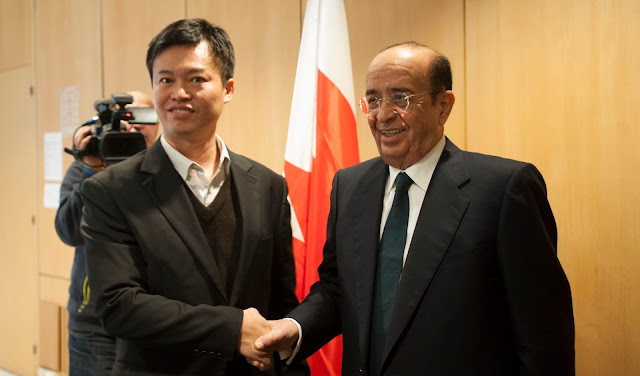 |
| Credits: © UNESCO/P. Chiang-Joo https://flic.kr/s/aHskrWgX73 |
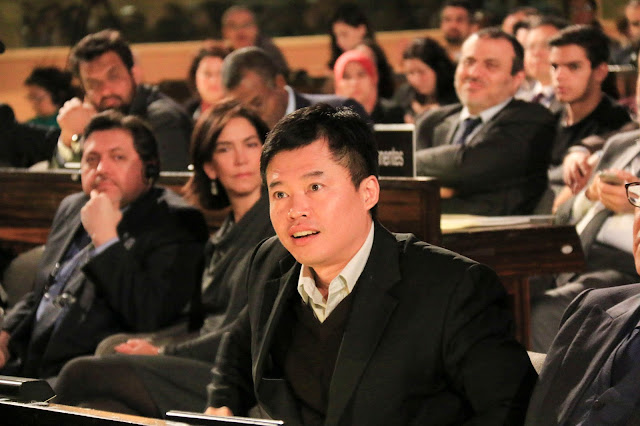 |
| Credits: © UNESCO/P. Chiang-Joo https://flic.kr/s/aHskrWgX73 |
 |
| Credits: © UNESCO/P. Chiang-Joo https://flic.kr/s/aHskrWgX73 |
 |
| Credits: © UNESCO/P. Chiang-Joo https://flic.kr/s/aHskrWgX73 |
 |
| Credits: © UNESCO/P. Chiang-Joo https://flic.kr/s/aHskrWgX73 |
 |
| Credits: © UNESCO/P. Chiang-Joo https://flic.kr/s/aHskrWgX73 |
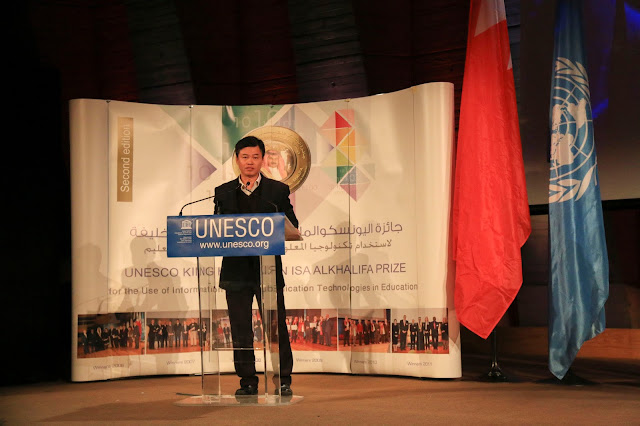 |
| Credits: © UNESCO/P. Chiang-Joo https://flic.kr/s/aHskrWgX73 |
 |
| Credits: © UNESCO/P. Chiang-Joo https://flic.kr/s/aHskrWgX73 |
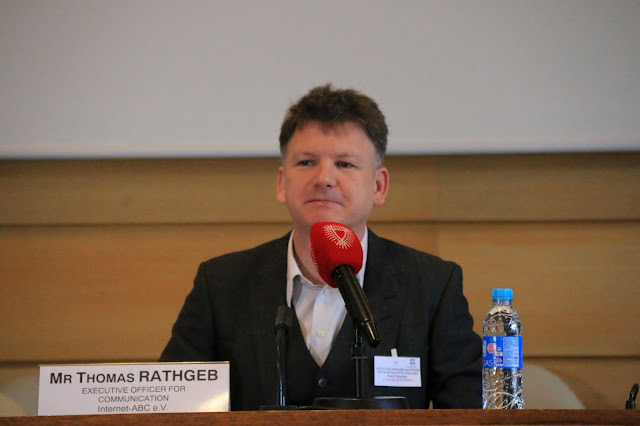 |
| Credits: © UNESCO/P. Chiang-Joo https://flic.kr/s/aHskrWgX73 |
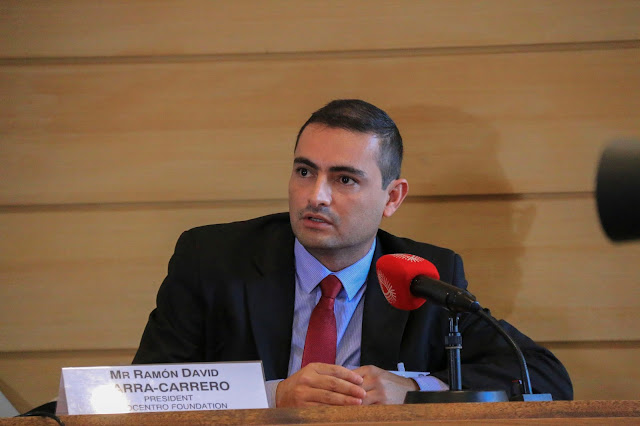 |
| Credits: © UNESCO/P. Chiang-Joo https://flic.kr/s/aHskrWgX73 |
 |
| Credits: © UNESCO/P. Chiang-Joo https://flic.kr/s/aHskrWgX73 |
 |
| Credits: © UNESCO/P. Chiang-Joo https://flic.kr/s/aHskrWgX73 |
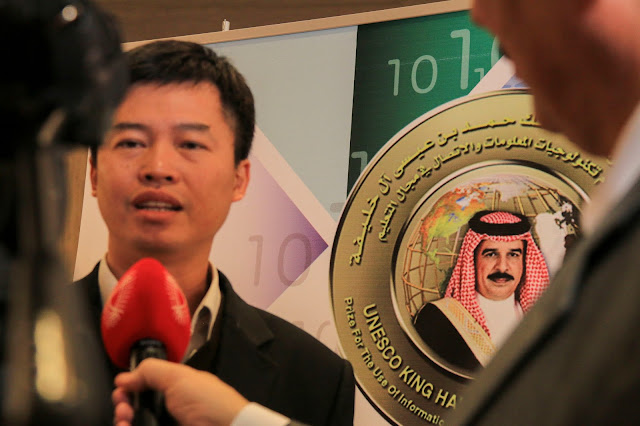 |
| Credits: © UNESCO/P. Chiang-Joo https://flic.kr/s/aHskrWgX73 |
 |
| Credits: © UNESCO/P. Chiang-Joo https://flic.kr/s/aHskrWgX73 |
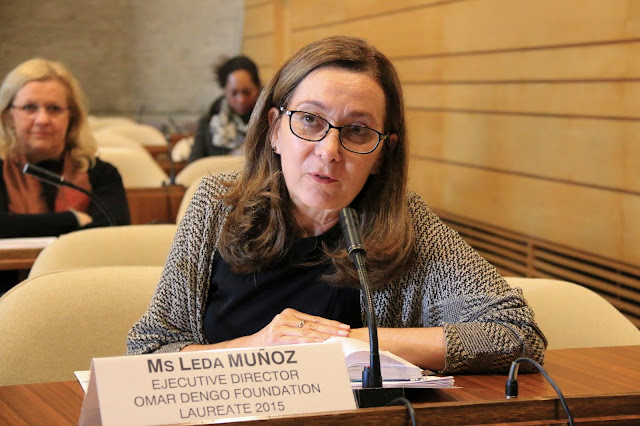 |
| Credits: © UNESCO/P. Chiang-Joo https://flic.kr/s/aHskrWgX73 |
 |
| Credits: © UNESCO/P. Chiang-Joo https://flic.kr/s/aHskrWgX73 |
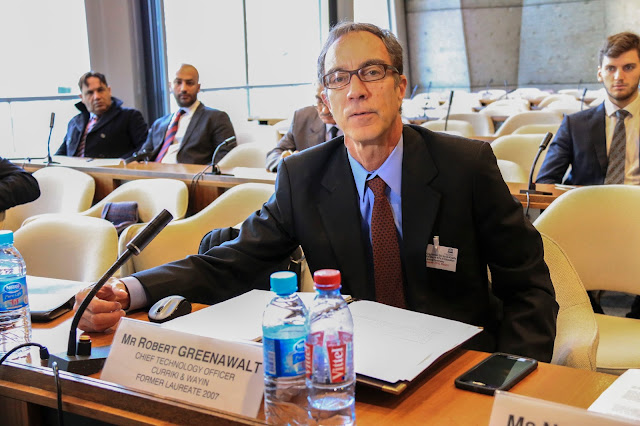 |
| Credits: © UNESCO/P. Chiang-Joo https://flic.kr/s/aHskrWgX73 |
 |
| Credits: © UNESCO/P. Chiang-Joo https://flic.kr/s/aHskrWgX73 |
 |
| Credits: © UNESCO/P. Chiang-Joo https://flic.kr/s/aHskrWgX73 |
Photo by me
Photo gallery UNESCO HQ 13 January 2016 Paris
Credits
- Stella, Victor and Lily for vetting MOE materials
- Shirleen and Chor Huat for supporting the submission for Singapore
- Andreas Dewanto for the independent letter of honor from NUS
- Pai Ching for MFA materials
- UNESCO for advancing OER
- King Hamad for sponsoring the prize
- Miao Fengchun, Rana Maatoug and Giraldo Sevilla Andrea from UNESCO for organising this.
- Pilar for the photo of the event
Other laureates
Singapore Media Release
- https://www.moe.gov.sg/news/press-releases/singapore-s-ict-pedagogical-innovation-recognised-by-unesco - Singapore has been awarded the UNESCO King Hamad Bin Isa Al-Khalifa Prize for the Use of ICTs in Education. The award was presented to the Ministry of Education for the project – Open Source Physics at Singapore (OSP@SG).
- http://www.channelnewsasia.com/news/singapore/singapore-wins-unesco/2428572.html the fastest Media post, by Singapore wins UNESCO award for physics programme An open-source physics modelling programme developed by the Ministry of Education was recognised for its use of Information and Communications Technologies in education.
- http://www.straitstimes.com/singapore/education/singapore-physics-teaching-software-wins-global-awardsingapore-physics-teaching-software-wins-global-award
- http://m.zaobao.com.sg/story/571278 联合早报网讯

- http://www.academyofsingaporeteachers.moe.gov.sg/networked-learning-communities/subject-chapters/physics-chapter Singapore physics teaching software wins global award!
Web Friendly Version of the MOE Press Release
15 January 2016
SINGAPORE’S ICT PEDAGOGICAL INNOVATION
RECOGNISED BY UNESCO
1. Singapore has been awarded the UNESCO King Hamad Bin Isa Al-Khalifa Prize for the Use of ICTs in Education. The award was presented to the Ministry of Education (MOE) for the project - Open Source Physics at Singapore (OSP@SG).
An Innovative Resource for Teachers
2. OSP@SG helps teachers bring real-world physics concepts into the classroom. The programme complements real-life experiments by providing interactive models that help visualisation. The programme also has a function for mathematical modelling, where students’ ideas can be modelled and compared with real life and simulated data.
3. Resources developed under this programme are open-source – it gives teachers and students the freedom to collaborate and share Information and Communication Technologies (ICT) resources for teaching and learning Physics. For example, resources can be embedded within interactive textbooks. The modelling tools available are free for students all over the world to access and edit. Since 2012, MOE has been collaborating with schools1 on OSP@SG, with positive feedback received on the project both in Singapore and around the world.
Learning Comes Alive with OSP@SG!
4. In Evergreen Secondary School, students learnt about kinematics, dynamics and work, and energy physics concepts using open-source video analysis software and modelling tool. For example, teachers use the software to help students learn about the optimal time for a parachutist to release the parachute. Through modelling, students were able to better visualise, comprehend and explain these scientific concepts.
5. Over at Innova Junior College, students visualise the abstract concepts of superposition using the Ripple Tank Java simulation which shows how two waves overlap to produce the interference pattern. This approach allows students to test out their own experimental setups through the simulation of waves. Similarly, students at Yishun Junior College learn about gravity through simulations, where students could better visualise and explore satellite motion, and discover abstract gravitational field concepts, through manipulation and modelling techniques.
6. For more information and contacts on school projects that harnessed OSP@SG, please refer to Annex A.
About UNESCO King Hamad Bin Isa Al-Khalifa Prize for the Use of ICTs in Education
7. Since 2005, the award has recognised innovations in teaching and learning that leverage technology to improve educational outcomes. Funded by the Kingdom of Bahrain, the Prize seeks to recognize governments, non-governmental organizations and individuals that embrace ICT as a pedagogical ally to make learning more effective. The theme for 2015 is “Pedagogical Innovation in the Use of ICT in Teaching and Learning”. The prize ceremony was held at the UNESCO Headquarters in Paris, France on 13 January 2016. More information on the prize can be found here: http://www.unesco.org/new/en/unesco/themes/icts/ict-in-education-prize/.
1 The schools are: Anderson Junior College, Evergreen Secondary School, Hwa Chong Institution, Innova Junior College, Meridian Junior College, National Junior College, Raffles Girls’ Secondary School, River Valley High School, Saint Andrew’s Junior College, Serangoon Junior College, Victoria Junior College and Yishun Junior College.
Annex A LIST OF MEDIA INTERVIEWEES
Ministry of Education
| 1 |
Ministry of Education Mr Wee Loo Kang Lawrence Tel: 68796526 Email: This email address is being protected from spambots. You need JavaScript enabled to view it. |
Mr Lawrence Wee is a Senior Specialist in Educational Technology Division (ETD) and Principal/co-Principal investigator in the OSP@SG project. The OSP@SG project has developed digital libraries of older Java and newer HTML5 JavaScript simulations and Tracker video models designed for teaching and learning. |
| 2 |
Evergreen Secondary School Mr Tan Kim Kia |
Mr Tan Kim Kia is a Teacher and co-Principal investigator in one of the projects. He brought the Real World Physics to his Secondary One to Three classrooms through Video Analysis and Modelling using Tracker. He also publishes videos on his YouTube video Channels to make physics concepts come alive for his students. Students Tan Wei Xiang and Lawrence Pasion Caisip used the Tracker Video Analysis in Sec 3 and they found that Tracker enabled them to see the connections between the real life and the scientific graphs introduced in lessons. The modelling feature in Tracker enthralled them to investigate further different Physics phenomenon using mathematical thinking |
| 3 |
Innova Junior College
Mr Ong Chee Wah |
Mr Ong Chee Wah is a Lead Teacher and a co-Principal investigator in two of the projects. Besides using the Ripple Tank Java simulation in his Physics lessons, he has also explored the use of video tracker in the study of projectile motion. He is using the interactive textbook to teach the topic Gravitational Field this year. Students Geraldine Tee Joo Ting, Huang Hong Shuai and Trevor Anthony Jagatnath have used the simulations in their dynamics tutorial and they found that the simulations are helpful to their learning |
| 4 |
Yishun Junior College
Mr Goh Giam Hwee Jimmy |
Mr Jimmy Goh is a Head of Department for Science and co-Principal investigator in two of the projects. He champions the use of gravitation simulations as this topic has always been challenging for students who could not visualise planetary interaction. His students, Sato Shinya and Desiree Lim, have found the geostationary satellite simulation particularly useful to help them understand the motion and working principles of different satellites. |
Other Resources / References:
- http://en.unesco.org/events/award-ceremony-2015-unesco-king-hamad-bin-isa-al-khalifa-prize-use-icts-educationEvent Website by UNESCO
- http://www.unesco.org/new/en/unesco/themes/icts/ict-in-education-prize/ ICT prize main page
- http://www.unesco.org/new/en/media-services/single-view/news/the_2015_unesco_king_hamad_bin_isa_al_khalifa_prize_for_the_use_of_icts_in_education_rewards_projects_from_costa_rica_and_singapore Media service UNESCO immediately release on 13th January 2016
- http://www.unesco.org/new/en/media-services/single-view/news/award_ceremony_of_2015_unesco_king_hamad_bin_isa_al_khalifa_prize_for_the_use_of_icts_in_education/#.Vphq9BV97IU Media service Award Ceremony of 2015 UNESCO King Hamad Bin Isa Al-Khalifa Prize for the Use of ICTs in Education
- https://youtu.be/cVrTL-lAplY?t=12m30s Bahrain News Agency Bahrain: King of Bahrain delegate of His Highness Sheikh Mohammed bin Mubarak to attend the ceremony VII
- https://youtu.be/syZVQgQCb1I?t=4m57s Bahrain News Agency Bahrain: UNESCO organizes seminar on UNESCO Prize, King Hamad bin Isa Al Khalifa
- http://www.bna.bh/portal/en/news/706172 Bahrain News Agency Panel discussion on UNESCO-King Hamad ICT Prize held
- http://www.gdnonline.com/Details/59058/Commitment-to-education-honoured Gulf Digital News Commitment to education honoured
- http://www.ameliarueda.com/nota/fundacion-omar-dengo-recibe-premio-de-la-unesco-acceso-tecnologico UNESCO awards to Fundación Omar Dengo by promotingtechnology access to education
- http://www.telesurtv.net/english/news/UNESCO-Awards-Costa-Rica-and-Singapore-For-Technology-Projects-20160114-0013.html
- http://www.straitstimes.com/singapore/education/singapore-physics-teaching-software-wins-global-award
- https://weelookang.blogspot.com/2021/12/ospsg-reflections-after-5-years.html
Quotes
- "This award is a signal of our commitment in Singapore, in service of UNESCO, for the world, to contribute to the global missions for equitable access to open educational resources. OSP@SG is here to benefit the world." - WEE Loo Kang Lawrence
- "UNESCO has awarded Singapore in their attempt to bring countries together to license and contribute to the global movement towards open educational resources, empowering anyone to be educate and level up everyone regardless of race, language, gender or religion in the world. By sharing this story, I reinforce UNESCO's message to draw strength in believing in yourself, others and something larger like "open educational resources", and bring joy to the world through our work." - WEE Loo Kang Lawrence
Frequently Asked Questions about Open Source Physics @ Singapore (OSP@SG)
1. What is Open Source Physics @ Singapore (OSP@SG) and what is its goal?
OSP@SG is an initiative from the Ministry of Education, Singapore, that aims to enhance the teaching and learning of physics through accessible, affordable, and adaptable digital resources. It provides well-designed simulation models (created using Easy Java/JavaScript Simulations) and video analysis models (using Tracker software) which serve as powerful inquiry tools augmenting real-life experiments. The overarching goal is to make physics more engaging and comprehensible for students by enabling visualization and interactive exploration.
2. How does OSP@SG integrate technology to enhance learning?
OSP@SG leverages two main pedagogical approaches utilizing technology. The first is progressive mathematical model building, where students can propose their own initial ideas and translate them into a simulation. They then compare the simulation data to their model and real-world results, refining their model iteratively until it accurately represents the physical phenomenon. The second approach uses dynamics particle modeling within Tracker to allow the students to understand Newton’s 2nd Law through contact forces and computational thinking. These approaches help students deeply understand the underlying mathematics and computational thinking involved in physics.
3. What makes OSP@SG resources accessible, affordable, and adaptable?
OSP@SG follows a "3A Framework":
- Accessible: Resources are readily available online without logins or passwords, making it easy for anyone to download and use them.
- Affordable: The resources are practically free, requiring only internet access and a computer with Java and/or a modern browser.
- Adaptable: All source codes for simulations are open for modification, allowing users to improve and expand upon existing models, tailoring them to specific educational needs. These resources are shared under a Creative Commons Attribution license, allowing reuse, remixing and redistribution.
4. What specific types of resources are provided by OSP@SG?>
OSP@SG provides a variety of digital resources, primarily:
- Easy Java/JavaScript Simulations (EJSS): Interactive simulations that allow students to explore physics concepts visually and manipulate variables to see real-time effects.
- Tracker Video Analysis Models: Software tools enabling students to analyze real-world videos, track motion, and develop mathematical models, relating them to physics laws and principles.
- Interactive Textbooks: Digital chapters that embed simulations and models into the learning experience.
5. What is "progressive mathematical model building" within the OSP@SG framework?
Progressive mathematical model building involves students creating their own mathematical models and comparing them with real world and simulated data. Using Easy JavaScript Simulations, students can translate their initial ideas about physical phenomena into mathematical equations. These equations can then be visualized through interactive simulations. As students analyze the simulation results and observe differences between their initial models and the actual behavior, they refine their models through iterative steps, until their model fits the simulated data. This iterative modeling process helps students understand the power of math and how it can be applied to deepen physics concepts.
6. How does OSP@SG address the needs of teachers and students?
The needs of both students and teachers are addressed in several ways:
- Teacher Collaboration: Teachers are actively involved in co-designing the simulations and video analysis tools, ensuring the resources are relevant and practical for classroom use.
- Student Feedback: Feedback is regularly gathered through lesson observations and interviews, helping improve and adapt the resources to better address their learning needs.
- Flexibility: The open-source nature of the resources provides teachers the freedom to change the codes, edit the video models and redistribute them to suit their particular learning objectives.
7. How is the quality of the materials developed under OSP@SG ensured?
The quality of OSP@SG materials is ensured through continuous feedback and an iterative development process:
- Open Feedback: The project solicits feedback from a global community using platforms like blogs, Google+ comments, and in-person interviews.
- Student Interviews: Direct feedback from students after lessons helps identify areas of improvement and enhances the effectiveness of the resources.
- Creative Commons: The materials are developed and shared under a Creative Commons attribution license, meaning that other users globally can provide feedback, which informs iterative development.
8. How does OSP@SG contribute to the larger Open Educational Resources (OER) movement and what is its international impact?
OSP@SG makes a significant contribution by providing open-source, freely available digital resources for physics education. This not only supports learning within Singapore but also fosters a global movement of shared educational resources. By making its resources freely available, OSP@SG empowers educators and students worldwide. Its impact is reflected in various forms including:
- International Collaboration: OSP@SG has connected with educators and experts in many countries, resulting in joint projects and resource development.
- UNESCO Recognition: It has been selected by UNESCO Bangkok to be included in the "Directory of Free Educational Resources for Teachers" and won the UNESCO King Hamad Bin Isa Al-Khalifa Prize for its pedagogical innovation and use of ICT in teaching and learning.
- Global Accessibility: The resources are accessible across various devices including personal smartphones, enabling learning beyond traditional classroom settings.



